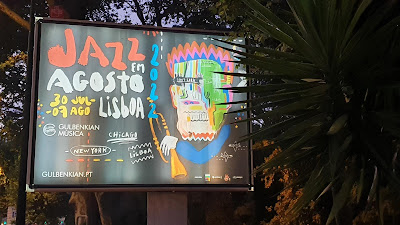Monday, August 1
The day’s adventure began with a walk along the multi-lane Av. Fundação Calouste Gulbenkian which took me to the Águas Livres Aqueduct. The impressive 18th century giant stone structure spans a valley between the main part of the city and the surrounding hills and has intrigued me since I first laid eyes on it. My goal today was simply to get as close as I possibly could, which, as I found out after winding about some complicated footpaths, is very very close. Climbing up from the base of one of the arches, I entered the Campilode neighbourhood and discovered the Museu da Aqua, a museum dedicated to the creation of the water system. It was
closed on Mondays.
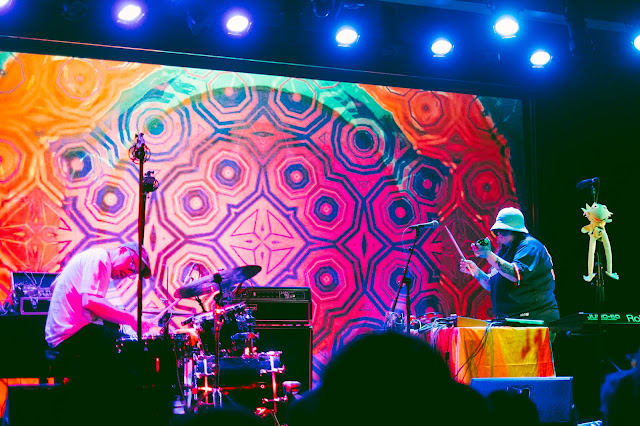 |
| Anteloper. Photo: Gulbenkian Música – Vera Marmelo |
creative process drive the show. She played some trumpet, captured and reprocessed the sound, added some layers of electronics, and let it happen. She even sang a slightly sideways version of Moon River.
quite interesting to witness, and the results of thier sonic explorations was really enjoyable.
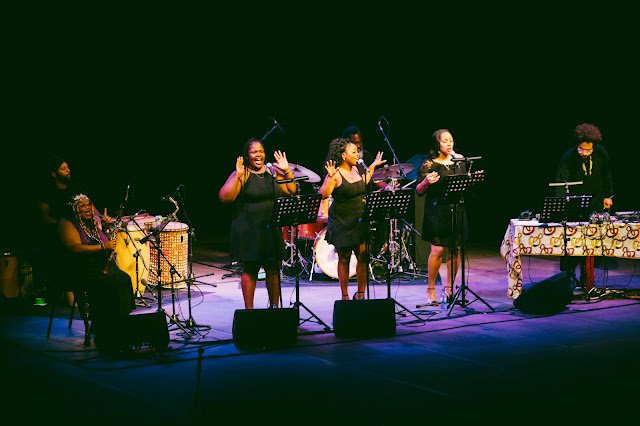 |
| Black Monument Ensemble. Photo: Gulbenkian Música – Vera Marmelo |
center, both of the stage and of the music, the singers Erica Nwachukwu, Monique Golding, and Tramaine Parker.
narration added density to the breezy music, tracing themes of freedom and the conditions in the U.S.. “I can’t rebuild a nation, no longer working out,” rang out the repetitious and sweet-sounding
chorus of one song, direct and effective.
Tuesday, August 2nd
For a while, if you follow the news clipping that appears briefly on screen during the wonderful 65-minute film, Zingaro, being so outside of the culture, did not have anyone to play with in and around Lisbon. In fact, he spent much of his formative years playing outside the country. This is obviously
a situation that has changed and Zingaro can now be found playing in many different configurations in Lisbon, including Jazz em Agosto this year with Turquoise Dream.
concert programs, and an intriguing clip of Zingaro in perhaps the early 1980s performing a piece of new music accompanied by a giant stack of electronic gear. Then, employing a cinéma vérité approach, a
lengthy film-within-the-film follows the quartet of Zingaro, Joelle Leandre, Paul Lovens, and Sebi Tramontana between performances on a recent tour in Europe. Finally, choreographed segments show Zingaro deep in thought, holding his violin, and simply waiting.
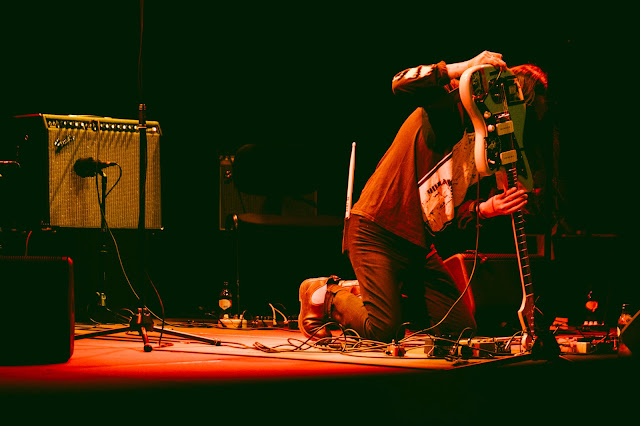 |
| Tashi Dorji. Photo: Gulbenkian Música – Vera Marmelo |
strum arhythmic tonal clusters, sometimes a single high note would ring out clearly. Dorji began looping the rhythmic textures and layered on additional sound.
strings then ring out. It was a bit painful to see a guitar played this way, but I trusted it would be ok, as he is the professional.
stomping rhythmic figure that he then used to accompany himself to a powerful end.
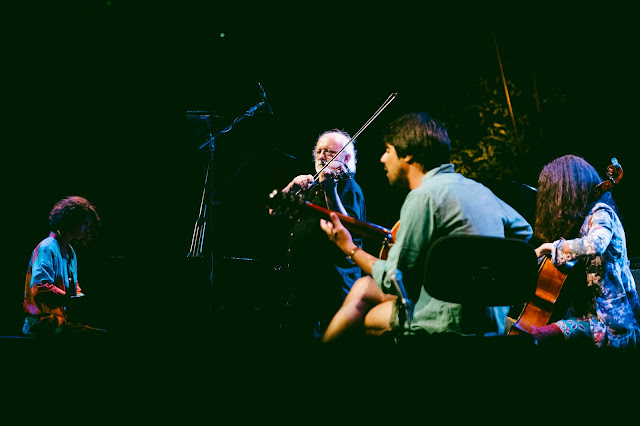 |
| Turquoise Dream. Photo: Gulbenkian Música – Vera Marmelo |
quartet’s playing is free, ego-less and and unfraid. They began by creating a whirl of sound. Zingaro played a series of elongated tones as the cello and guitar played single, rapid notes, and the piano added a sprinkle of harmony.
dissonant statement, the music was imbued with sentimentality, buoyancy, and in Zingaro’s bowing, hopefulness. It was a lovely set, made so especially through the mix of gentle and somewhat
musically violent moments.
Wednesday, August 3rd
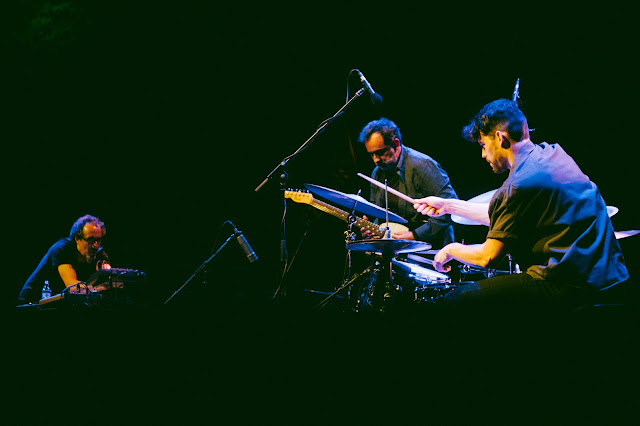 |
| Voltaic Trio. Photo: Gulbenkian Música – Vera Marmelo |
drumming was an artful mix of heavy beats and a lithe pulse. Nuno’s guitar buzzed along side the electronics. As the voltage increased on stage, Guerreiro pulled out his trumpet and blasted out a heavily effected series of long notes. The sound was a dense thicket of crackling and buzzing energy with some ringing notes from the guitar.
of tension.
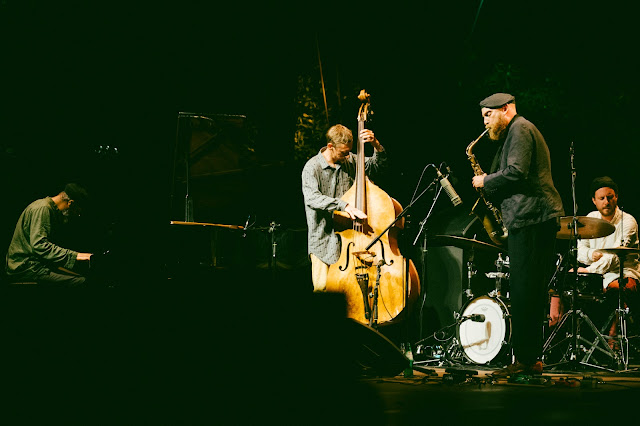 |
| أحمد [ahmed]. Photo: Gulbenkian Música – Vera Marmelo |

